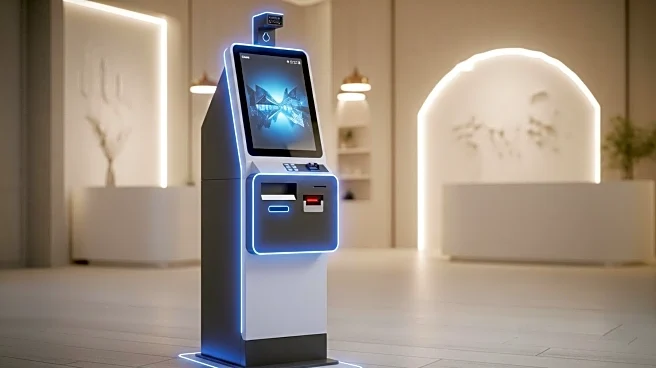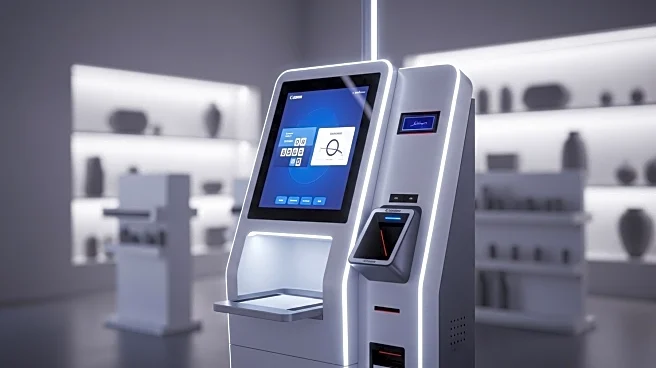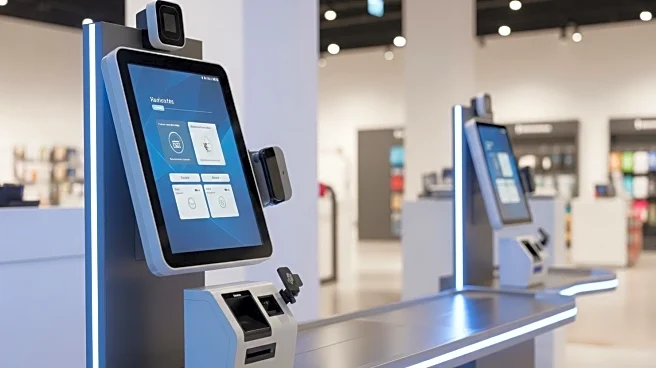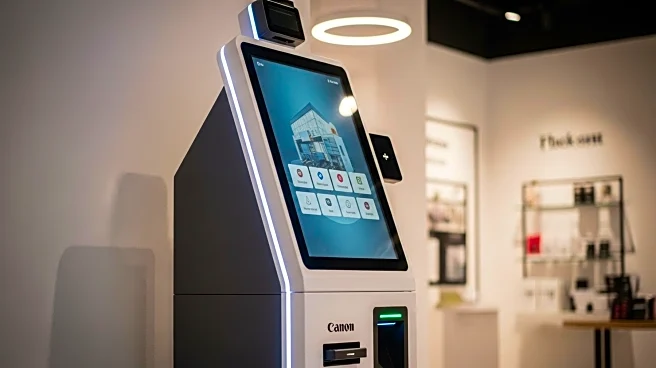What's Happening?
The self-checkout systems market is undergoing significant analysis, with a focus on regional growth disparities. The report highlights North America, Europe, Asia Pacific, Latin America, and the Middle East and Africa as key geographic segments. It examines the strategies of major players such as Toshiba Tec Corporation, NCR Corporation, and Diebold Nixdorf, detailing their investment, marketing, and product development plans. The market is segmented by components like hardware, software, and services, and by mounting types such as stand-alone and wall-mounted systems. The report also covers end-user categories including supermarkets, hypermarkets, and convenience stores. The analysis aims to provide insights into market share, growth rates, and future potential, helping stakeholders make informed investment decisions.
Why It's Important?
Understanding the growth potential and regional disparities in the self-checkout systems market is crucial for stakeholders, including retailers and technology providers. As consumer demand for faster and more efficient shopping experiences increases, self-checkout systems offer a solution that can enhance customer satisfaction and reduce labor costs. The market's growth is influenced by technological advancements and changing consumer preferences, making it essential for companies to adapt their strategies accordingly. Regions leading in market growth may offer lucrative opportunities for investment and expansion, while those lagging may require targeted strategies to overcome challenges. The insights provided by the report can guide businesses in optimizing their operations and capitalizing on emerging trends.
What's Next?
The self-checkout systems market is expected to continue evolving, with technological innovations driving further adoption. Companies may focus on enhancing system capabilities, such as integrating advanced payment options and improving user interfaces. As the market grows, competition among key players is likely to intensify, prompting strategic partnerships and acquisitions. Retailers may increasingly adopt self-checkout systems to streamline operations and meet consumer demand for convenience. Monitoring regional growth trends will be essential for businesses looking to expand their presence and capture market share. Stakeholders should stay informed about regulatory changes and consumer behavior shifts that could impact market dynamics.
Beyond the Headlines
The rise of self-checkout systems reflects broader shifts in retail technology and consumer behavior. As automation becomes more prevalent, ethical considerations around job displacement and data privacy may arise. Companies must balance efficiency gains with potential social impacts, ensuring responsible implementation of technology. Additionally, the integration of self-checkout systems with other digital solutions, such as mobile payments and loyalty programs, could transform the retail landscape, offering new opportunities for personalized customer experiences. Long-term, the adoption of self-checkout systems may influence store design and layout, as retailers optimize spaces for automated processes.











